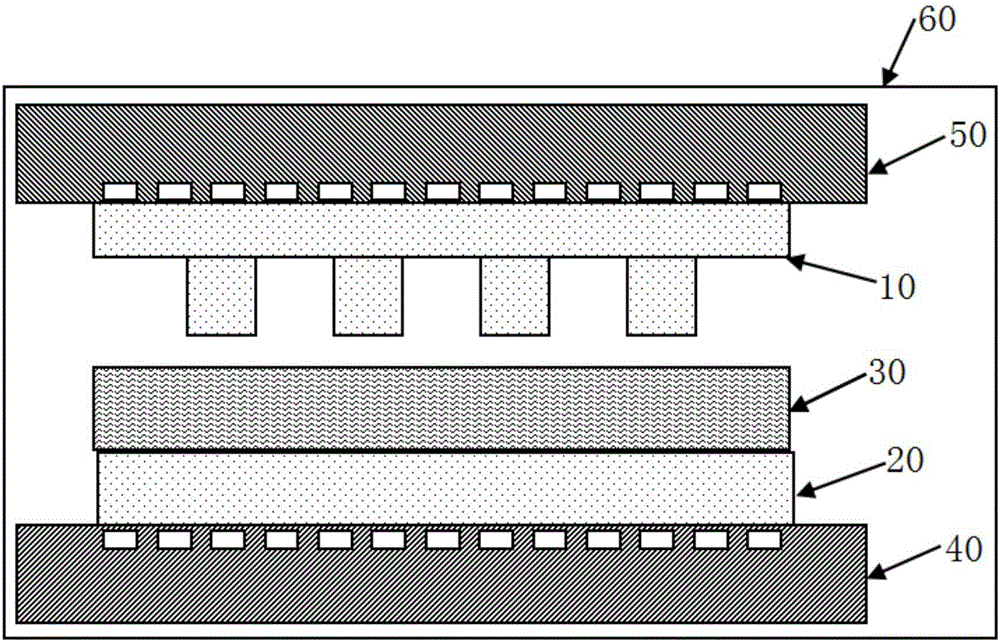Vacuum negative pressure nano-imprinting method
A technology of nanoimprinting and vacuum negative pressure, applied in nanotechnology, optics, optomechanical equipment, etc., can solve the problems of template deformation, easy to be filled, no structure transfer, etc., to achieve complete filling, avoid contact with air bubbles, and protect damaged effect
- Summary
- Abstract
- Description
- Claims
- Application Information
AI Technical Summary
Problems solved by technology
Method used
Image
Examples
Embodiment Construction
[0029] The specific implementation manners of the present invention will be further described below in conjunction with the drawings and examples. The following examples are only used to illustrate the technical solution of the present invention more clearly, but not to limit the protection scope of the present invention.
[0030] The technical scheme of concrete implementation of the present invention is:
[0031] like figure 1 As shown, a vacuum negative pressure nanoimprinting method comprises the following steps:
[0032] 1) Prepare a soft nanoimprint template 10, a substrate 20 and a nanoimprint material; the material of the soft nanoimprint template 10 is polydimethylsiloxane (PDMS), polytetrafluoroethylene (Teflon) or Perfluoropolyether (PFPE); the nanoimprint material adopts a polymer colloid that can be cured by ultraviolet exposure, and the viscosity of the polymer colloid is lower than 50mPa·s;
[0033] 2) Coating the polymer colloid on the top surface of the sub...
PUM
| Property | Measurement | Unit |
|---|---|---|
| viscosity | aaaaa | aaaaa |
Abstract
Description
Claims
Application Information
 Login to View More
Login to View More - R&D
- Intellectual Property
- Life Sciences
- Materials
- Tech Scout
- Unparalleled Data Quality
- Higher Quality Content
- 60% Fewer Hallucinations
Browse by: Latest US Patents, China's latest patents, Technical Efficacy Thesaurus, Application Domain, Technology Topic, Popular Technical Reports.
© 2025 PatSnap. All rights reserved.Legal|Privacy policy|Modern Slavery Act Transparency Statement|Sitemap|About US| Contact US: help@patsnap.com

